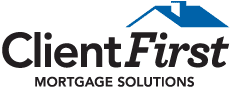
Supersized Rate hikes
What does supersized rate hikes mean to you?
Rate hikes would impact your monthly budget. As the Bank of Canada (BoC) embarks on what could prove to be a whatever-it-takes campaign to tamp down surging prices, Canadian homeowners who took part in the pandemic debt binge of the past two years, could be facing a reckoning.
According to the BoC, total real estate-secured lending has gone from nearly $1.48 trillion in the first quarter of 2020, to roughly $1.78 trillion in the first quarter of 2022. That’s an increase of $300 billion or roughly 20%.
As the Bank of Canada starts to hike its policy rate from historic lows, Canadians with variable mortgages are already feeling pinched. Deputy Governor Paul Beaudry, indicated that it’s open to hiking rates up to at least the top end of its 2% – 3% neutral range, by the end of the year.
From a cash flow perspective, another 150-basis point increase would mean having to pay an extra $78 monthly per $100,000 of mortgage for an adjustable-rate mortgage holder.
Many financial institutions would end out communications on the same day or day after a rate decision, that they are adjusting their Prime Rate. In terms of when it reflects on a client’s statement, or bank account, it could show on their next bi-weekly payment, or the following month, so it’s a fairly quick impact.
With higher interest rates on the horizon, some Canadians may want to evaluate their budgets and separate their need-to-haves from their nice-to-haves. The Bank of Canada is increasing rates to tame runaway inflation. As the impact of these rates take hold, we hopefully will begin to see inflation slowed down, eventually getting back to reasonable levels.
While some HELOC holders may be feeling a measure of borrower’s regret, HELOCs are a useful product, as it allows homeowners to leverage their most valuable asset to get the lowest rate they’ll find on revolving debt. The critical point to note is to use them wisely.
Original Article: www.wealthprofessional.ca


